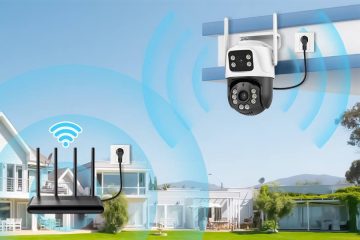Have you ever noticed that while three servings of an edible may make you feel nervous or paranoid, one serving may make you feel content and at ease? If so, you’re feeling cannabis’ biphasic effects.
Different cannabinoid concentrations, such as those of CBD and THC, produce different physical and mental effects due to the biphasic effects of cannabis. One cannabinoid may have an alerting effect at high doses while having a relaxing effect at lower doses (or vice versa).
Find out more about the science underlying cannabis’s biphasic effects and how to determine the ideal dosage to get the desired effects. Additionally, if you want to use marijuana for medical reasons, you must have a medical card. Any convenient telemedicine platform will make it easy for you to obtain your medical card online.
What Is the “Biphasic Effect”?
A drug has a biphasic effect when its high and low doses have opposing effects. For example, some people find that low dosages of THC help them relax. However, high THC dosages may cause paranoia in those same individuals, and in severe situations, even cause hallucinations.
However, other medications also have opposite effects at high and low concentrations, so biphasic effects are not just found in cannabis. For example, small amounts of alcohol may give you a pleasant “buzz,” but large amounts can depress you because alcohol is a depressant.
The brain’s processing of chemicals, particularly in the hippocampus, is the basis for all biphasic effects. Dopamine receptors, serotonin receptors, and other important neurotransmitters in the brain respond differently to various concentrations of cannabis and other drugs.
Understanding the Biphasic Effects of Cannabis
More caution is needed with THC’s biphasic effects than with CBD and other small cannabinoids. This is a result of THC’s profound effects on people’s feelings, perceptions, and bodily responses. Here are some examples of possible THC biphasic effects supported by science:
- Memory and cognition: low doses have a beneficial effect, while high doses have a negative effect.
- Anxiety: At low doses, reduces anxiety; at high doses, increases anxiety.
- Fertility: Less fertility at high doses and more at low doses.
Instead of using human subjects, animals are used in many studies on the biphasic effects of THC. To comprehend the potential biphasic effects of THC on humans, more investigation and human clinical trials are required.
Though not as much as its psychoactive counterpart, THC, CBD is also biphasic. In general, CBD has sedative effects at higher doses and more stimulating effects at lower doses. When THC and CBD are combined, people with anxiety or panic disorder may experience these biphasic effects more intensely.
Tetrahydrocannabivarin (THCV) is another cannabinoid with unique biphasic effects. In low doses, THCV is anti-psychoactive, which means it can lessen some of the psychoactivity of THC. In higher doses, THCV is psychoactive, which means it can work in concert with THC to somewhat increase the psychoactivity of cannabis.
Finding Your Perfect Dose
Determining the ideal dosage for cannabis can mean the difference between a positive experience and a “bad trip.” There are strategies to help prevent negative effects even though there are no guarantees about how marijuana will make you feel, particularly if you’re new to the plant.
The following advice will help you make the ideal “cannabis cocktail” for yourself:
- Start Low, Go Slow
You can simply take more cannabis than you have previously, but you cannot take it back. Start with the least amount of the psychoactive cannabis compound, THC, if you have never used it before. Negative cannabis experiences are frequently caused by THC overuse, which can make you feel anxious, suspicious, or even scared.
Try starting with 5 mg or less of THC to help avoid any unfavorable psychoactive effects. Additionally, take your cannabis slowly over several hours as opposed to minutes. After taking a slow, low-dose cannabis for an hour, you might find that you’ve achieved the desired high and can stop there.
- Choosing the Best Ingestion Method
Certain cannabis administration or ingestion techniques have higher potencies than others. It is well known that edibles have the most potent and enduring effects on humans. Large-scale marijuana edible consumption has also resulted in numerous visits to the emergency room.
Instead of making a batch of pot brownies, think about sublingually placing a few drops of tincture under your tongue or applying topical cannabis oil to your skin. If you decide to consume cannabis, however, remember the adage “start small, go slow” and lean more toward CBD than THC in your cannabinoid ratios.
- Use CBD Products
Even with small THC consumption, you can benefit from the possible medicinal effects of cannabis. Products containing CBD are widely accessible in specialty stores and health stores. For an item to be considered a CBD product, its THC content cannot exceed 0.3%. If you reside in a state where medical marijuana has not yet been legalized, CBD products are another fantastic option.
Final Words!
You can help control the biphasic effects of cannabis by using the proper dosage and ratio of CBD to THC. You’ll probably have to experiment a bit to find the right dose and mode of consumption for you.
While high doses of THC may cause anxiety or a depressive episode, low doses of THC can generally help reduce anxiety and depression. Conversely, lower doses of CBD may have more stimulating effects that may not be effective in managing anxiety or depression, while moderate to high doses of CBD may have sedative effects that can lessen anxiety.
Consult a medical professional who is knowledgeable about cannabis if you’re attempting to use it to treat a specific medical condition and get your online medical card that grants you legal access to consume it.



